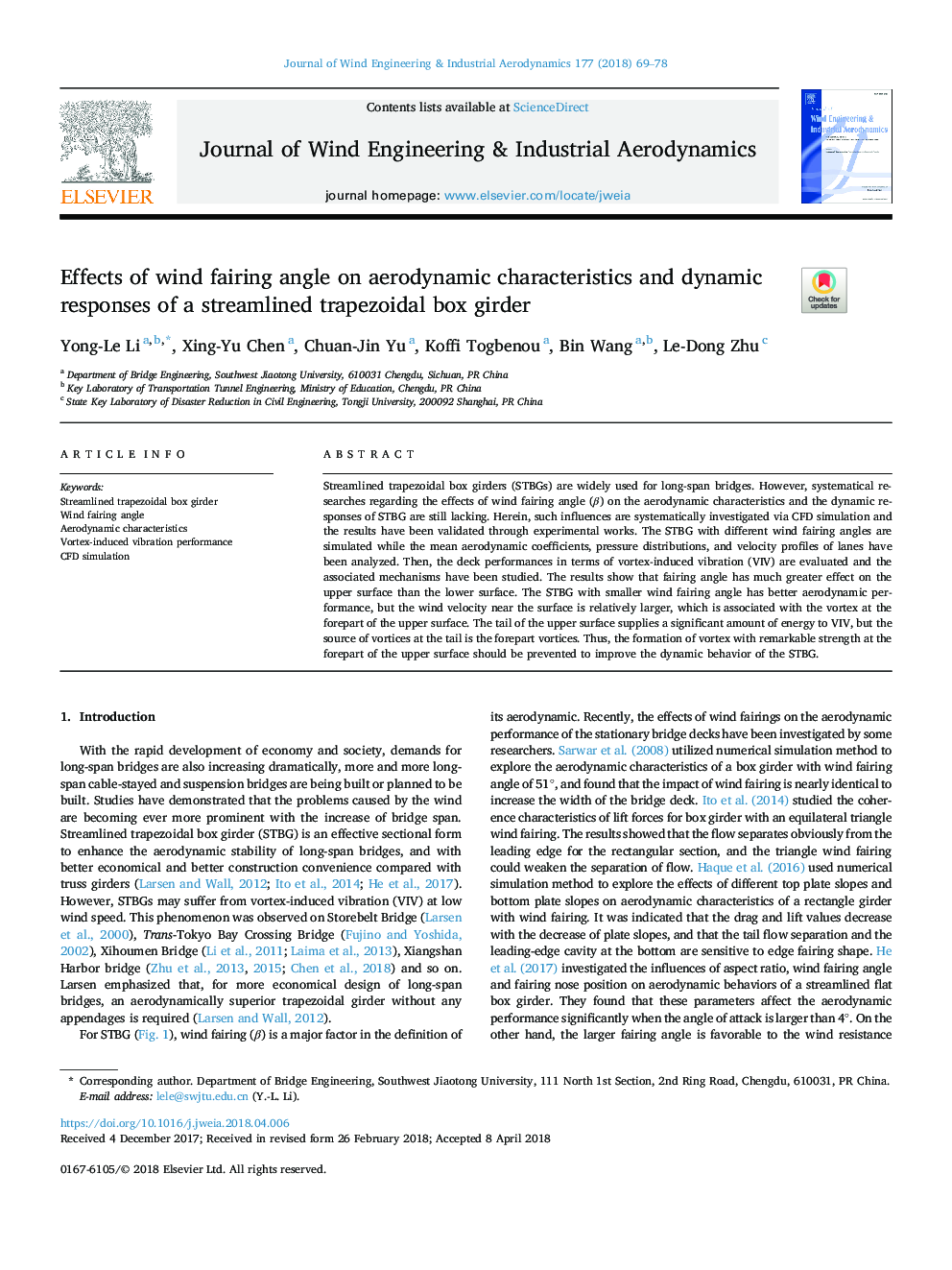| Article ID | Journal | Published Year | Pages | File Type |
|---|---|---|---|---|
| 6756867 | Journal of Wind Engineering and Industrial Aerodynamics | 2018 | 10 Pages |
Abstract
Streamlined trapezoidal box girders (STBGs) are widely used for long-span bridges. However, systematical researches regarding the effects of wind fairing angle (β) on the aerodynamic characteristics and the dynamic responses of STBG are still lacking. Herein, such influences are systematically investigated via CFD simulation and the results have been validated through experimental works. The STBG with different wind fairing angles are simulated while the mean aerodynamic coefficients, pressure distributions, and velocity profiles of lanes have been analyzed. Then, the deck performances in terms of vortex-induced vibration (VIV) are evaluated and the associated mechanisms have been studied. The results show that fairing angle has much greater effect on the upper surface than the lower surface. The STBG with smaller wind fairing angle has better aerodynamic performance, but the wind velocity near the surface is relatively larger, which is associated with the vortex at the forepart of the upper surface. The tail of the upper surface supplies a significant amount of energy to VIV, but the source of vortices at the tail is the forepart vortices. Thus, the formation of vortex with remarkable strength at the forepart of the upper surface should be prevented to improve the dynamic behavior of the STBG.
Related Topics
Physical Sciences and Engineering
Energy
Renewable Energy, Sustainability and the Environment
Authors
Yong-Le Li, Xing-Yu Chen, Chuan-Jin Yu, Koffi Togbenou, Bin Wang, Le-Dong Zhu,
